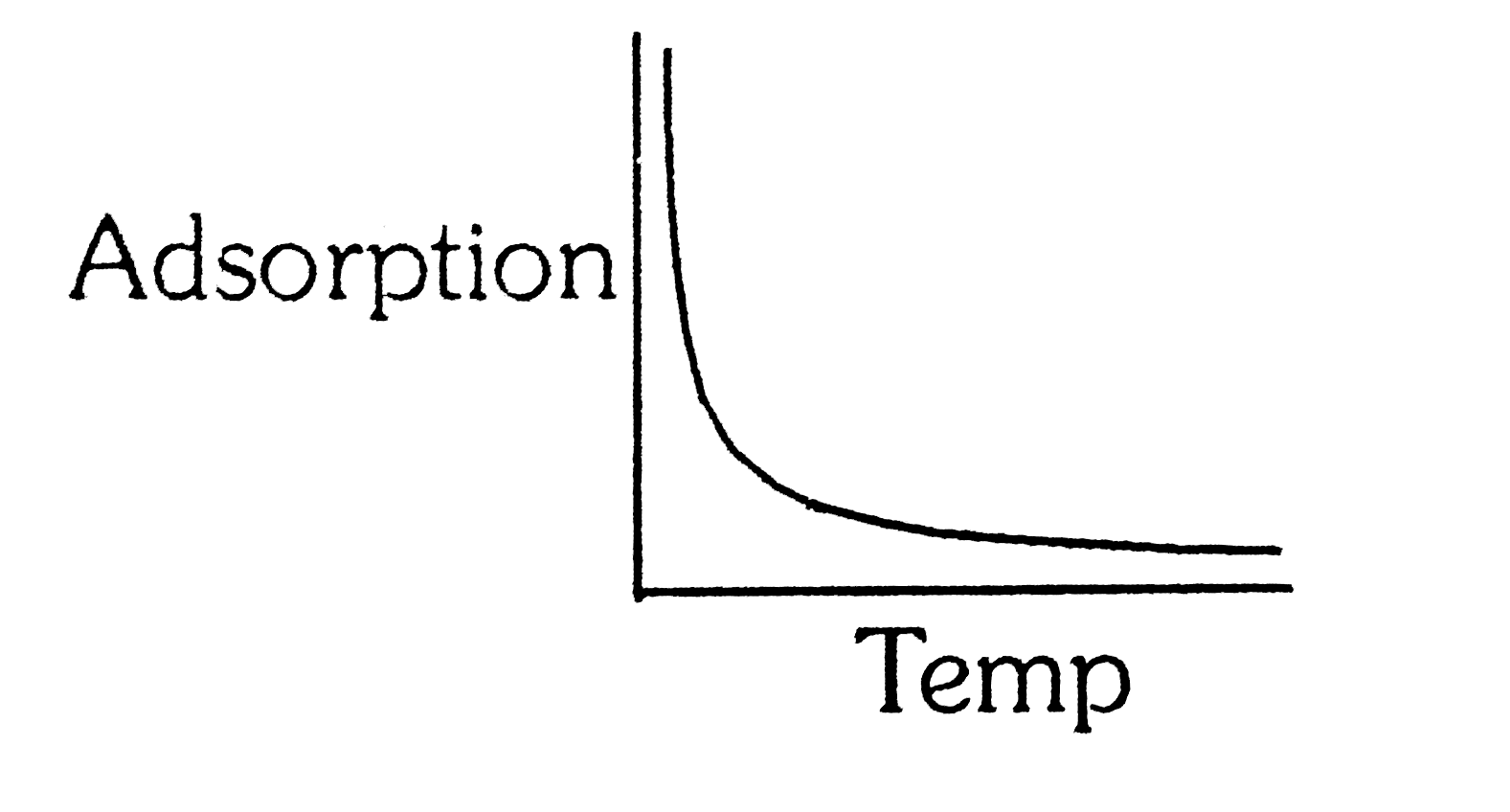Why is adsorption always exothermic ?
Adsorption is of spontaneous nature. This mean that ΔG is - ve. Since randomness of the particles decreases as a result of adsorption ΔSorTΔS is - iv.
ΔG(−ve)=ΔH−TΔS(−ve) (Gibbs Helmholtz equation)
ΔH must be negative or adsorption is of exothermic nature.
Topper's Solved these Questions
- SURFACE CHEMISTRY BOOK - DINESH PUBLICATIONCHAPTER - SURFACE CHEMISTRY EXERCISE - HIGHER ORDER THINKING SKILLS (HOTS) QUESTIONA AND NUMERICAL PROBLEMS
11 Videos
- SURFACE CHEMISTRY BOOK - DINESH PUBLICATIONCHAPTER - SURFACE CHEMISTRY EXERCISE - MULTIPLE CHOICE QUESTION BANK (MCQB)
28 Videos
- SURFACE CHEMISTRY BOOK - DINESH PUBLICATIONCHAPTER - SURFACE CHEMISTRY EXERCISE - ADDITIONAL IMPORTANT QUESTIONS
22 Videos
- SOME BASIC CONCEPTS OF CHEMISTRYBOOK - DINESH PUBLICATIONCHAPTER - SOME BASIC CONCEPTS OF CHEMISTRYEXERCISE - ULTIMATE PREPARATORY PACKAGE
20 Videos
- THE CARBON FAMILYBOOK - DINESH PUBLICATIONCHAPTER - THE CARBON FAMILYEXERCISE - Ultimate
11 Videos
Similar Questions
Knowledge Check
The correct statement(s) pertaining to the adsorption of a gas on a solid surface is(are)
(i) adsorption is always exothermic
(ii) physisorption may transform into chemsisorption transform into chemisorption at high temperature
(iii) physisorption increases with increasing temperature but chemisorption decreases with increasing temperature .
(iv) chemisorption is more exothermic than physisorption , however it is very slow due to higher energy of activation.A(i) and (iv) onlyB(ii) and (iii) onlyC(i),(ii) and (iv) onlyDAll of these.Statement: A catalyst always lower the energy of ectivation.
Explanation: The catalyst-reactant interaction forms activated adsorbed complex and adsorption is always exothermic.A(a) S is correct but E is wrongB(b) S is wrong but E is correctC(c ) Both S and E are correct and E is correct explanation of SD(d) Both S and E are correct but E is not correct explanation of S.The correct statements pertaining to the adsorption of a gas on a solid surface are
(i) Adsorption is always exothermic
(ii) Physisorption may transform into chemisorption at high temperature
(iii) Physisorption increases with increasing temperature but chemisorotion decrease with increasing temperature
(iv) Chemisorption is more exothermic than physisoption, however, it is very slow due to higher energy of activationA(i),(ii),(iii),(iv)B(ii),(iii),(iv)C(i),(iii)D(ii),(iv)
Adsorption is always exothermic in nature , Do tor agree ?
View SolutionIs adsorption an exothermic or endothermic phenomenon ?
View SolutionAdsorption is always
View SolutionSelect the set having correct statements pertaining to the adsorption of a gas on a solid surface
(1) physisortion may transform into chemisorption at high temperature (2) chemisorption is more exothermic than physisortion , however it is very slow due to higher energy of activation
(3) Adsorption is always exothermic
(4) Physiosorption increase with increasing temperature but chemisorption decreases with increasing temperature
View SolutionAssertion :- The graphical representation of physical adsorption with temp is

Reason :- This is weak adsorption & adsorption is exothermic process.
View Solution
